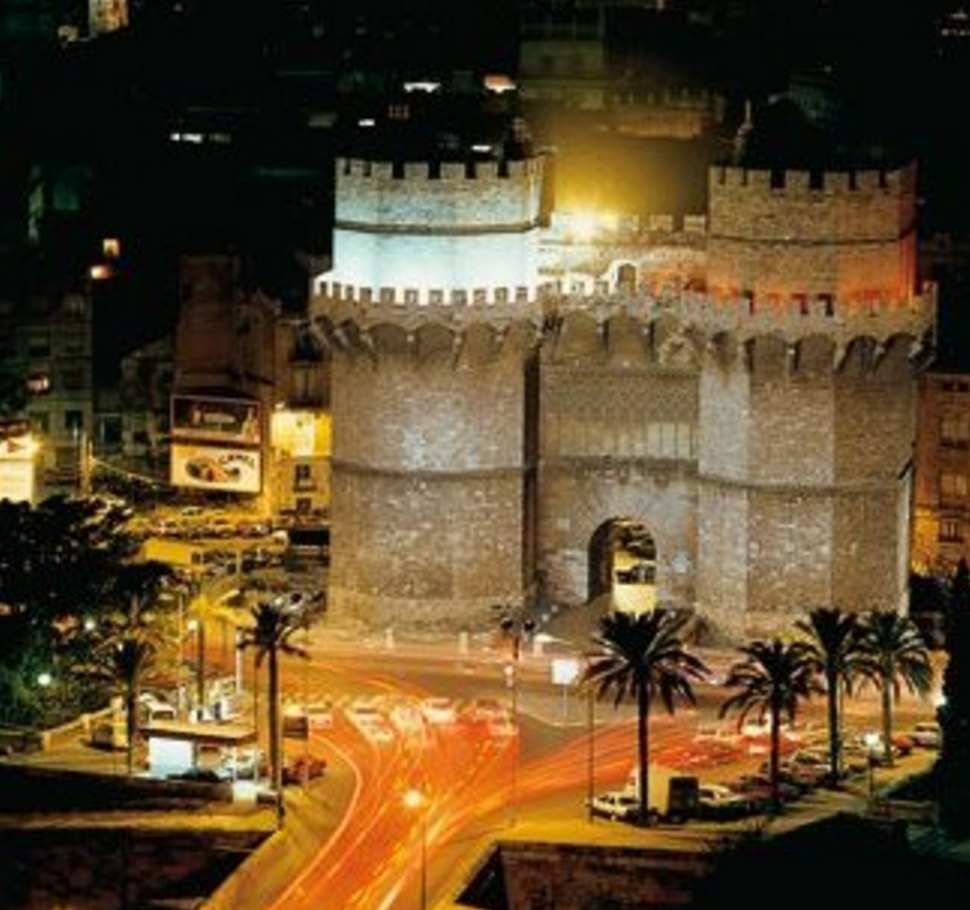HISTORICAL CENTRE

Founded by the Romans as Valentia in 138 a.C. in a greek-carthaginians settlement, Valencia has been the home of many cultures over its history: Romans, Visigoths, Moors, Jewish and the Aragonese, all made the city an important cultural and financial centre.
In the year 1094, Rodrigo Díaz de Vivar, called El Cid Campeador, conquered Valencia on behalf of the Christians, but the city later fell to the Almoravids in 1102. Following the Moorish domination, it was in 1238 that Jaime I of Aragon finally reconquered the city, and founded the Kingdom of Valencia, with its characteristic legislative privileges (Furs).
During the 15th and 16th centuries, Valencia became one of the major economic powers on the Mediterranean seaboard. It was the time of the Valencian “siglo de oro” (Golden Age), which was characterized by splendour in the arts at the hands of Joanot Martorell (author of Tirant lo Blanc, the first modern European novel), Ausias March, Roig de Corella, Isabel de Villena, Jordi de Sant Jordi and Jaume Roig, among others.
During the War of Spanish Succession, Valencia sided with archduke Charles of Austria, and after the victory of the Borbons at the Battle of Almansa (April 1707), Felipe V abolished the local privileges (Fueros). In 1874, Alfonso XII was proclaimed constitutional king at Sagunto city in the north of Valencia.
When democracy was restored, the Region of Valencia was given its present Autonomous Status in 1982 as the “Comunidad Autónoma de Valencia”, that includes the provinces of Alicante, Catellón and Valencia. The history of the city, now the capital of the Region, is both rich and varied, providing a patrimony that has converted it into one of the major cities in Spain on both cultural and economic levels.
Valencia boasts cultural jewels over one thousand years old.
This rich history can be traced in all the city … just take a guided walk tour in the city centre to see all this rich patrimony !
The “Quart” and “Serranos” towers
Originally the former access gates to the city, these are examples of late gothic military constructions which contribute to the city’s unique aspect.
Virgin Square (Plaza de la Vírgen) and the Cathedral complex
Feel the pulse of over 21 centuries of history in the true heart of the city. You will find a wealth of heritage, such as the city’s Cathedral.
The Basílica, the Almoina Museum, the Archeological Crypt of Saint Vincent and the splendid places that have served as a seat of regional government since ancient times.
Silk Exchange (Lonja de la Seda)
Enter one of Europe’s most representative gothic buildings, declared World Heritage by the UNESCO. Discover how the building acted as one of the most important commercial trade centres during the middle ages.
Central Market (Mercado Central)
One of Europe’s largest food markets, located inside a building that is a jewel of modernist architecture. Immerse yourself in the scent of local produce, savour the Mediterranean products and enjoy our typical cuisine.



